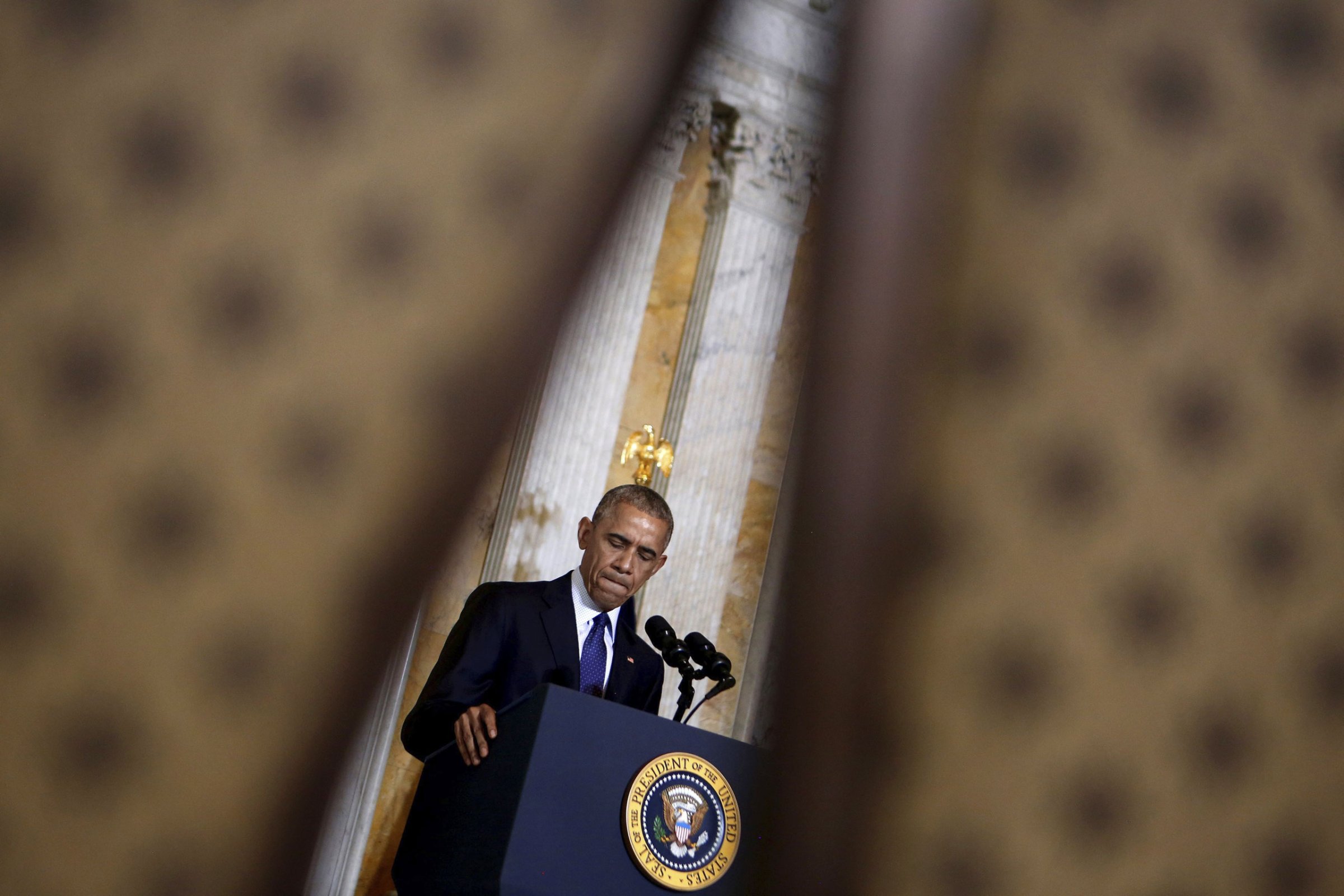
When Jan. 20, 2017, rolls around, the odds are high that the new U.S. President will find on her or his plate the job of finding, fixing and killing ISIS. An organization that revels in its horrific theater of enslavement, human trafficking, torture and mass murder is too venal to be allowed to survive in any form. The bigger question is how to take on what has already proved to be a difficult task? And what is the appropriate role for the U.S.?
First, we need to win militarily in Iraq, cutting off the financial fuel that flows from enslaved and taxed populations in Mosul, Fallujah and other parts of Iraq. This must be done with a three-axis strategy: tactical bombing at high level from aircraft carriers in the Gulf and Mediterranean, Kurdish peshmerga armed and trained by a U.S.-led coalition, and Iraqi security forces stiffened by a NATO training mission. That combination should be able to drive ISIS out of Iraq in six to 12 months. It will require the deployment of around 10,000 U.S. troops and 5,000 NATO and other coalition forces into Iraq. (There are currently less than 5,000 U.S. troops in country.) Their mission will be the training, equipping and support—principally special forces, as well as intelligence and targeting—of the indigenous forces.
Second, in syria, the complex set of facts on the ground dictate a special-forces campaign but will ultimately require a political and diplomatic settlement. We cannot kill our way to a broad victory in Syria, and even taking Raqqa, ISIS’s “capital,” will require a complicated international military effort involving not only U.S.-led-and-organized forces, but also Sunni troops—Jordanian, Egyptian and Saudi being the best—and Russian and Iranian military engagement. We will need roughly 500 U.S. and allied special forces and significant rotary-wing support, which can stage from outside the country to deploy into Syria.
This military effort against Raqqa must be aligned with a political and diplomatic settlement that will resemble the end game in the Balkans in the mid-1990s. That means a Russian seat at the table and voice in the outcome. And yes, we will probably need to put up with Syrian President Bashar Assad for some period of time, as distasteful as that will be. Our diplomats can help lead the effort, but it will require an international consensus—and that will be elusive.
The third key element in defeating ISIS is to smother its sources of funding. Cutting Raqqa off from its Iraqi colonies will help, as will targeted special-forces raids against the economic engines of smuggling, counterfeiting, sale of antiquities and human trafficking. Using the international financial system to ensure that no funds can flow into the caliphate will be helpful. This will require both international and interagency cooperation, and the U.S. must lead this part of the effort.
Fourth, the war must be carried out online as well. ISIS is effective at publicizing, proselytizing, recruiting, fundraising, and command and control on the Internet. We need to use offensive cybertools to counter all of those efforts, and the increasingly capable U.S. Cyber Command action teams—essentially the SEALs of the web—should have a central role in this campaign.
fifth, we must cut off the already diminishing flow of new recruits to ISIS. This is the long game of education, opportunity and employment for the disenfranchised and disillusioned Muslim populations all around the world, but especially in Europe, a major source of foreign fighters. While there are preliminary indications that the flow of recruits is slowing down from the U.S. and somewhat from Europe, it is picking up from Africa and Southeast Asia. Over time, the U.S. can be a part of a global effort to counter violent extremism, but it will be a long road involving a more effective use of soft power and strategic communications than has been employed so far.
A final issue for the new President to consider after the fall of ISIS is the long-term future of Syria. Much as the Balkans were partitioned in order to create stability, the idea of dividing Syria into perhaps three entities should be on the table. There would be an Alawite section along the seacoast and encompassing Damascus, with Russian sponsorship; a Kurdish homeland carved out of Syria, but not taking any Turkish or Iraqi territory; and a central and hopefully moderate Sunni section with Western sponsorship. This is an outcome that won’t truly satisfy anyone, but—as in the Balkans—it may be the best path to long-term peace in the Levant.•
Admiral Stavridis was 16th Supreme Allied Commander at NATO, and is dean of the Fletcher School of Law and Diplomacy at Tufts University
More Must-Reads From TIME
- The 100 Most Influential People of 2024
- The Revolution of Yulia Navalnaya
- 6 Compliments That Land Every Time
- What's the Deal With the Bitcoin Halving?
- If You're Dating Right Now , You're Brave: Column
- The AI That Could Heal a Divided Internet
- Fallout Is a Brilliant Model for the Future of Video Game Adaptations
- Want Weekly Recs on What to Watch, Read, and More? Sign Up for Worth Your Time
Contact us at letters@time.com